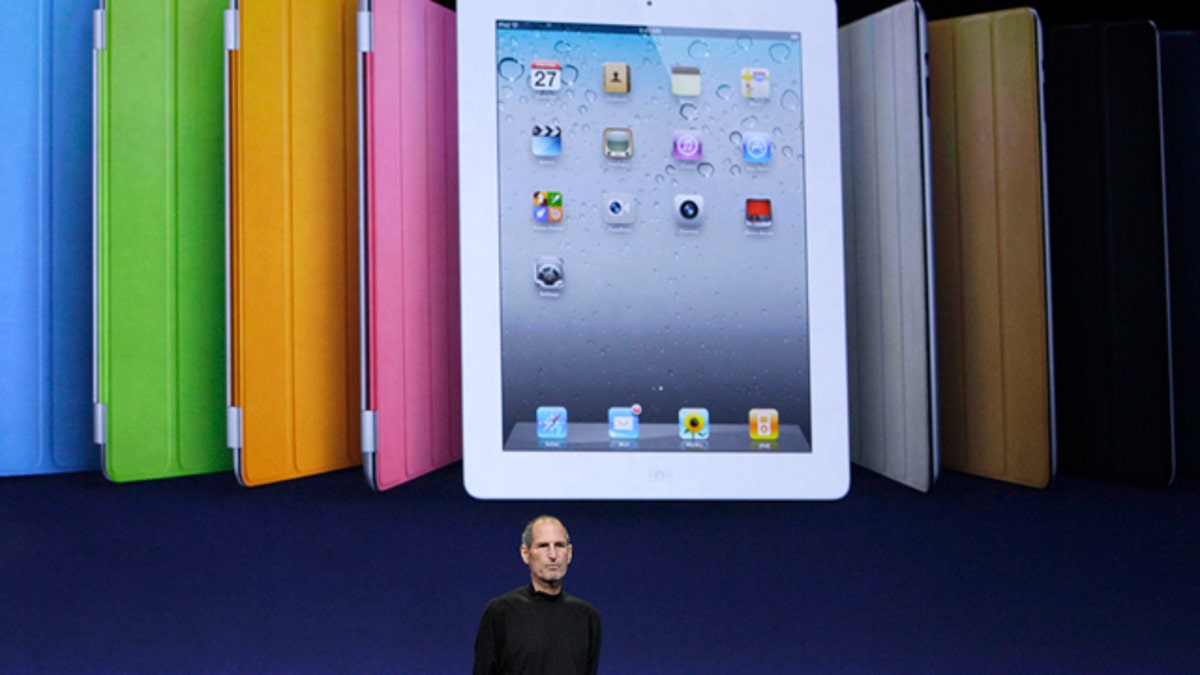
Apple chairman and CEO Steve Jobs stands under an image of the iPad 2 at an Apple event at the Yerba Buena Center for the Arts Theater in San Francisco, Wednesday, March 2, 2011. (AP Photo/Jeff Chiu)
A California teen discovered the magnets in iPad 2 tablets and covers are capable of interfering with cardiac rhythm devices, like pacemakers, according to the Heart Rhythm Society.
The research, conducted by 14-year-old Gianna Chien of Stockton, Calif , was presented Thursday at Heart Rhythm 2013, the Society’s 34th Annual Scientific Sessions.
“iPad 2s use magnets to help secure the cover to the tablet. Since people hold tablets so close to their chest, I wanted to see if these magnets could affect cardiac device performance,” said Chien, who initially organized the study as part of a school science fair project.
Cardiac rhythm devices can be affected by magnets and radiofrequency energy in products ranging from cellphones to MRI machines, the Heart Rhythm Society reported. When cardiac devices are near magnets, they switch into “magnet mode,” which could potentially disrupt function.
With the help of her cardiologist father, Chien asked 26 patients with implantable cardiac devices (ICDs) to hold the iPad 2 at reading distance. At this length, the iPad caused no electromagnetic interference.
However, when participants placed the tablet on their chests, as if they had fallen asleep with the iPad there, “magnet mode” was triggered in 30 percent of patients' ICDs, the Heart Rhythm Society reported.
“Since tablets are becoming more common, I hope these findings will encourage patients who have or may be a candidate for implantable defibrillators to talk to their doctor about precautions if they use a tablet like the iPad 2,” Chien said.
While previous studies have tested magnet interference in various products, this is the first to look at the iPad 2, the Heart Rhythm Society reported.




















